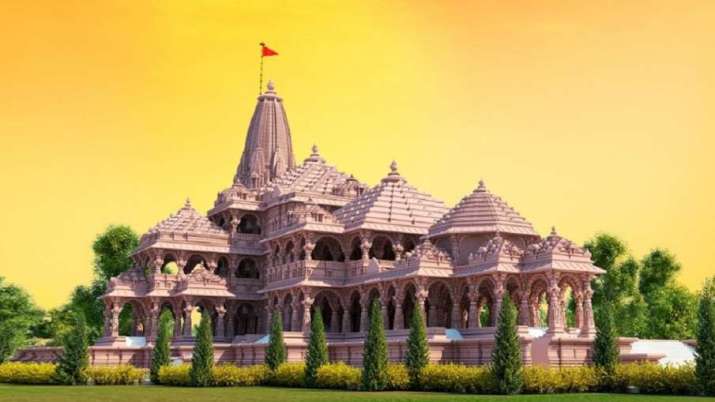Of the many reasons we celebrate Diwali, one of the chief is the return of Shri Rama to His home after 14 years of exile. Consider our good fortune that we will see Him back home, back to his Ayodhya, after over 500 years of exile.
This is the story of unyielding persistence against insurmountable odds. This is a saga of civilizational yagna against repeated assaults, two waves of Abrahamic attacks, and then from a 'secular' state that has been as much a stranger to its roots as its foreign rulers were.
I shudder to think about the kind of upbringing that results in statements like: "Shri Rama wouldn't have wanted to build his temple this way". "This is not my Hinduism". "Shouldn't we focus on economy instead of a mandir?". "Why rake up the unpleasant past? Let's look at future."
It cuts a sorry figure that many of our own think this way. It only reflects how poorly conversant they are with the epics. Consider the stratagems He resorted to for upholding dharma: killing a women rakshasa, killing the adharmic Vaali from behind, and anointing Vibheeshana the emperor of Lanka even before the war began. Indeed, He destroyed a powerful Rakshasa empire in the service of dharma.
Rama would indeed have done whatever it takes to reclaim his Home from a hostile takeover. Exactly what about Rama's life indicates that He would do it any different? What precisely about His life would point to his devotees abjectly surrendering to injustice?
Which version of Hinduism asks its followers to camouflage its timidity in the garb of wisdom? What about Hinduism tells you to avoid inconvenient but core issues at the alter of materialist pleasure? Isn't Bhagavat Geeta all about striving to perform your dharma despite the pain the path may involve?
It's unfortunate that those who don't believe in anything Hindu claim to be Hindus. It speaks of our own distancing from our roots. The Hindu middle class has steadfastly asked its younger minds to single-mindedly focus on career and material upliftment at the expense of culture. But the tree rises to its true heights when secure in its roots.
'The past is never dead. It's not even past.' - William Faulkner
The happenings today has its seeds in the past, just like the future takes birth in the present.
When the Birla Mandir opened at Delhi in 1936, it was the first temple to be built in that area after 7 centuries of relentless, industrial scale temple destruction. In the entire North India, you will barely find the grand temples with spellbinding architecture that exist in the south. The archeological evidence that the masjid at Ayodhya was built atop an existing temple is unassailable. The fact is that as late of 1980s, Britannica encyclopedia noted as much, until leftist historians distorted it all. Sitaram Goel's two-volume book titled “Hindu Temples; What Happened To Them.” details a number of current-day masjids built on temple ruins with evidence culled from the Islamic chroniclers and historians.
As with any nation with history of colonial suppression, it's incumbent on the surviving culture to reclaim its symbols.
To quote VS Naipaul on this subject:
- “The people who say that there was no temple there are missing the point. Babar, you must understand, had contempt for the country he had conquered. And his building of that mosque was an act of contempt for the country.”
- "Today, it seems to me that Indians are becoming alive to their history... [the invaders] were conquering, they were subjugating. And they were in a country where people never understood this...Only now are the people beginning to understand that there has been a great vandalising of India. Because of the nature of the conquest and the nature of Hindu society such understanding had eluded Indians before...What is happening in India is a mighty creative process.”
If you look at all the major superpowers in the world, including the latest entrant China, they position their modernization drive as a continuation of their overall civilizational ethos, as an organic outgrowth from their roots, rather than a new path divorced from their past.
This is vital to build the grand national narrative of any country. No nation becomes a power on the strength of military might alone, it needs to brand itself as a force for the larger good of the world.
India cannot become a superpower by denying its past and trying to clone itself in the lines of the west. The western model itself is seeing cracks as witnessed by the latest US elections - nearly half of their citizens believe the elections were stolen.
India will rise on its own strengths and ethos. And Rama Mandir will be the first resurgent step in the march to future greatness.

Comments
Post a Comment